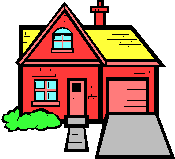What You Need To Know About Musical Form
![]()
 Chord
progressions come in sections, like one room in a house. You can put
several different rooms together to make a big house, or you can live
in a one room house. Just like people.
Chord
progressions come in sections, like one room in a house. You can put
several different rooms together to make a big house, or you can live
in a one room house. Just like people.
 In most 3rd world countries people
live in one room houses -- which means, of course, that much of the world
lives in one-room houses.
In most 3rd world countries people
live in one room houses -- which means, of course, that much of the world
lives in one-room houses.
Those of us who live in the West generally live in multi-room houses.
 But there are
also musical houses -- we call them songs-- that are built out of several
different rooms -- several different chord progressions. Some of them,
like mansions and castles, go on and on and get quite involved.
But there are
also musical houses -- we call them songs-- that are built out of several
different rooms -- several different chord progressions. Some of them,
like mansions and castles, go on and on and get quite involved.
![]()
But most songs are like many modest houses -- they have 2 or 3 rooms, sometimes 4 -- built using 2 or 3 or 4 different chord progressions.
Each "room" in a musical house is called a theme, or a "motif." The first theme is always called "A." The next theme is called "B," the next theme is called "C," and so on. Most songs only have 2 or 3 themes, but these themes often repeat.
For example, let's say we have a chord progression that goes like this:
C Am7 Dm7 G7
...and then it repeats those same 4 chords...
C Am7 Dm7 G7
and then we have another chord progression that goes like this:
Gm7 C7 F Fm7 Bb7 Eb G7
...and then the first chord progression is used again as the song ends.
This song would have a musical form of A, A, B, A -- main theme, repeat of main theme, contrasting theme, main theme.
|
Theme Theme Contrast Theme This form is known as |
If the song went like this: Theme Contrast Theme ...it would be known at |
The "B" section of a song is sometimes called the "bridge," or the "release," or the "chorus." These terms usually mean the same thing -- depending upon the form used.
Can you guess what this might be called? Theme Right you are! A B A B form.
|
Most popular songs fall into one of these forms:
A B A
A A B A
A B A C A
A B A B
Why should you care?
Because if you know songs are constructed this way, you can look at songs with smart eyes -- you know what to look for, and once you determine the form, you have a " mental map" of the song -- you're not just wandering from chord to chord anymore.
In addition, most songs are proportional. That is -- 4 bars of section A, then 4 bars of section B, then another 4 bars of section A, and so on. You will find TONS and TONS of popular songs that are 32 bars long in A A B A form -- 8 bars of theme A, 8 bars of theme A repeated, then a bridge of 8 bars, finishing with 8 bars of theme A.
Does that give you an advantage knowing that?
It gives you a HUGE advantage because you know what to look for, and you know that if you learn theme A you have automatically learned 75% of the song! All that remains is to learn the 8 bars of the bridge, and you've got it!
And that's why you need to learn about form.

